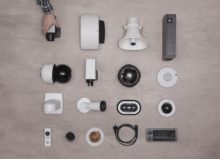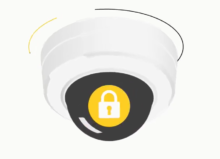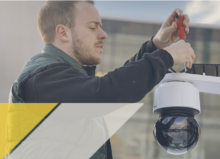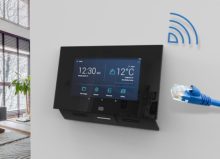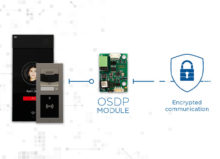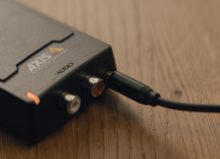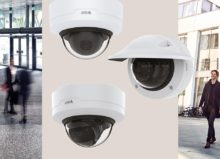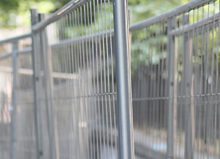The most flexible body worn camera solution becomes even more flexible
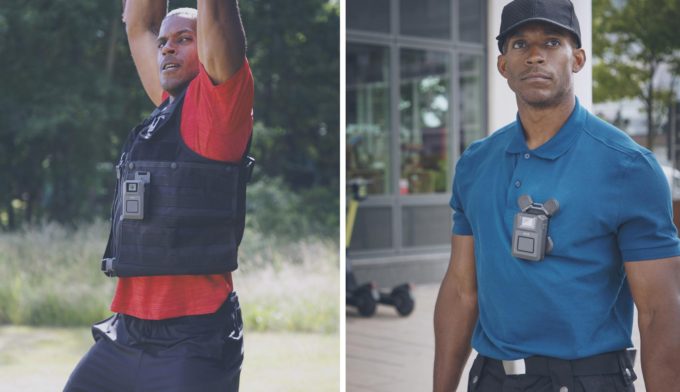
Axis entered the body worn camera market back in March 2020. The launch marked a significant move for Axis – the body worn camera was a new camera format for the company and one which took a great deal of effort in design. One of the central challenges for the Axis design team was to create – as the announcement highlighted – the ‘world’s most flexible’ body worn camera solution. While at launch much of the focus for this flexibility was on the open architecture which allows for integration with any existing video management systems (VMS) or evidence management systems (EMS), the concept of “flexibility” is realized in a number of ways, from the variety of mounting options to, more recently, a new sensor which opens up numerous additional use cases.
The success of the Axis body worn camera since its launch has been an endorsement of the efforts made by the company’s research and development team in meeting the unique design challenges of the body worn camera format (work which was also recognized with a Red Dot design award).
Feedback from customers on the body worn camera system design, particularly in its ease of use, has been overwhelmingly positive. A typical example comes from The Campus Police Department of the Putnam City School (PCS) District in Oklahoma, U.S.A., with officers praising the body worn camera’s ‘one click’ activation, seamless video download to the department’s VMS when charging, and the variety of camera mounting options.
Technological flexibility at the heart of the body worn camera solution
‘Flexibility’ was a focus during the design of the Axis body worn camera system and remains so through a number of enhancements since its launch.
Technological flexibility has been embedded through the use of open standards, meaning that customers can add body worn cameras to their existing surveillance solutions without needing to replace existing VMS and EMS technology. This is an important consideration for public sector organizations for which budget is often an issue, but also for sectors such as retail and healthcare which may be considering adding body worn cameras to their broader surveillance for the first time.
Another valuable aspect of the flexibility that comes with the Axis body worn camera system is the ability to assign any body worn camera unit to any user, rather than have a single specific unit assigned to an individual permanently. This is particularly useful if a unit is damaged or lost. Law enforcement officers, security personnel, or frontline healthcare staff can use their existing credentials – such as an RFID ID card – to check out any body worn camera unit, which is automatically uploaded with their profile.
Flexibility in body worn camera mounting
Everybody – and everybody – is unique. It, therefore, makes sense that body worn cameras have the flexibility to adapt to differences not only in physical attributes but in personal preferences. For a company that had previously designed cameras that would be mounted on buildings, poles, and vehicles, creating one to be worn on a human body presented one of the most challenging areas of the body worn camera’s design. It may seem like a straightforward subject, but as this podcast episode highlights, there are numerous considerations. Again, customer feedback has highlighted that the variety of camera mounting options has been well-received.
Fundamentally, wherever they are worn, body worn cameras need to be mounted to give a comprehensive field of view. The height of the wearer will be a key consideration, as will their right-hand/left-hand preference, and – in some cases – the favored placement of other tactical equipment. Mounting options must be able to accommodate these basic considerations and far more besides.
Active users, from law enforcement officers and security personnel to ambulance drivers and paramedics, will be involved in numerous activities during a shift: walking, running, moving in and out of vehicles, and more. Throughout all these activities, the body worn cameras must deliver a clear view while never becoming an obstruction or hindrance.
The body worn camera will also be used in all weather conditions. Not only does this have implications for the robustness of its design, but the user will be wearing suitable clothing – from heavy winter coats to light summer shirts; from tactical gear to standard uniform.
Axis provides mounting flexibility through a variety of options, from robust chest harnesses and MOLLE webbing mounts to lighter clip and magnet mounts. Importantly, body worn cameras from Axis have been developed with openness in mind, so they can also be used with a number of third-party mounts to provide customers with more flexibility.
More sensors bring even more flexibility – for security and beyond

While the main AXIS W100 Body Worn Camera is suitable for the majority of applications, further flexibility comes through the addition of other video sensor formats. The AXIS TW1200 Body Worn Mini Bullet Sensor is one available option, which attaches to the AXIS W100 and is ideal for mounting on helmets or caps for officers patrolling, for instance, on bikes or horseback. With the latest AXIS TW1201 Body Worn Mini Cube Sensor, the potential applications for body worn cameras have been further transformed.
The small form factor and weight of this latest sensor and mount (together they weigh a shade over 50g) mean that the sensor can be placed unobtrusively and even integrated into name badges or other items of clothing or staff uniforms. The sensor’s diminutive size does not mean a lack of power, however, as it has the same performance as the AXIS W100 Body Worn Camera, delivering Full HD resolution images at up to 30 frames-per-second.
The discreet nature of the new sensor means that body worn cameras become an attractive option for use cases beyond the traditional law enforcement and security applications. Sectors within which the safety and security of employees are paramount – for example, industrial plants, mining, and oil and gas processing – can use body worn cameras to ensure adherence to health and safety regulations. Retail, restaurants, and hospitality might consider using body worn cameras as an aid to employee training, or to assist in investigating customer complaints. Hospitals and healthcare organizations can roll out this technology to document processes and deliver the best possible patient experience. The use cases are endless.
Source: Axis Communications


